Album Weeds – Bolivia
 1866. 10 Centavos, brown.
1866. 10 Centavos, brown.
I am sorry to say that I have no genuine specimen of this stamp. There is only one plate, which contains 78 varieties of type.
Genuine
Engraved in taille-douce, like the other values hereafter described. If the stamp be held so that the light falls obliquely upon it, the ink will be seen to stand up from the paper in slight ridges. The upper numerals have their tops pointing towards the top corners of the stamp, while the lower numerals have their tops pointing towards the center of the stamp.
First Forgery
Lithographed, in red-brown or purple-brown, on white wove paper. The ink, of course, does not stand in ridges. Inside the outline of the globe there are six curved lines, parallel with the outline, and three or four vertical lines crossing them, above the AV of CENTAVOS, and two or three oblique lines above the OS. The crossed lines of shading in the spandrels, outside the inscribed oval, are very coarse and wide apart.
Second Forgery
I have only seen this lately. Nicely lithographed in brown, on rather thin, hard, white wove paper. The numerals are short and wide, and placed transversely in the containing-ovals, so that the tops of the upper numerals point inwards, towards the top of the stamp, and the lower numerals point outwards, towards the sides of the stamp. The curved lines on the globe follow the outline, as in the first forgery, but are much finer, and there are nine of them, not including the outline of the globe. There are no lines of shading crossing these. The spandrels in the background, behind the eagle, are formed by rows of square dots, instead of lines.
 1866. 50 Centavos, orange-yellow.
1866. 50 Centavos, orange-yellow.
There is one plate of this value, with 30 varieties of type on it.
Genuine
Very coarsely engraved in taille-douce, on thin, yellowish paper. The shoulder of the bird’s wing, near the S of CORREOS, is pointed in all my copies; and the outside of this wing is clear of the inner boundary-line of the name-oval, from the top to about the first O of CORREOS, where the wing and the outline of the oval run together into one line. All my copies have five curved lines of shading on the globe, under the bird. The stamp is somewhat rounded at the corners, and all four corners are rounded alike. The ink stands up a good deal from the surface of the paper, after the manner of all
Forged
Apparently engraved in taille-douce, on tolerably stout, white wove paper. The tint is more orange than that of the genuine. The shoulder of the bird’s wing, near the S of CORREOS, is very blunt and rounded, as is also the shoulder of the other wing. The outside of the right wing is joined to the inner outline of the name-oval, from the very bottom to about level with the last O of CORREOS, just where the shoulder of the wing begins to turn round. There are only four curved lines of shading on the globe, beneath the eagle. The bottom corners of the stamp are rounded, but the top corners are square and pointed. The ink stands out in thick masses and ridges from the surface of the paper, so that it feels ribbed to the touch.
1866. 100 Centavos, greenish-blue.
As in the case of the 50 C., there is only one plate of this value, with 30 varieties of type on it.
Genuine
Engraved in taille-douce, like the 50 centavos, and of a very similar design; same sort of paper. The right wing of the eagle only touches the inner outline of the name-oval, just at the bottom. Each of the little transverse ovals, containing “100”, touches both name-ovals, and also both sides of the outline of the stamp. The figures “100” in each of the lower ovals are in their normal position, with their tops pointing towards the center of the stamp, and this test will serve to detect the forgery very easily.
Forged
Apparently engraved in taille-douce, like the forged 50 centavos, on stout, very white wove paper. The right wing of the eagle touches the inner outline of the name-oval, from the bottom to about level with the first 0 of CORREOS. The ovals containing the figures of value do not touch the name-oval at all; the one at the right-hand top corner touches only the right side of the stamp, and the one in the left bottom corner almost touches the name-oval. The figures of value in the two lower ovals are placed upside-down, with their tops pointing to the bottom corners of the stamp.
My readers will please note that I consider these two stamps decidedly dangerous forgeries, and they will do well to be very careful, especially with the 50 C.
Postmarks
Genuine.—Most of my genuine copies are unused, and all the others bear only a word or figure written in ink upon them, so I am unable to say what is the normal postmark of this set.
Forged.—The forgeries are not cancelled.
 First Issue of 1867. 5 Centavos, lilac.
First Issue of 1867. 5 Centavos, lilac.
This is from the last “state” of the plate of the original 5 C. of 1866, with the colour changed from green to lilac. I understand that the plate was retouched or re-cut at least six times, and there are 72 types on the plate. The lilac 5 C. was printed, as I have said, from the last “state” of the plate, showing, upon the globe, only curved lines of shading, following the shape of the globe.
Genuine
Coarsely engraved in taille-douce, on rather thin, white wove paper. I have only a single specimen to describe from, and thus cannot guarantee that all the 72 types are alike in the points now to be mentioned. The outer frame is 1/2 mm. distant from the stamp. The E of CORREOS has its central tongue decidedly longer than either the top or bottom limb. There is no cross-bar to the A of BOLIVIA or the A of CENTAVOS. The letters of the inscription are small, as compared with the width of the oval containing them, so that there is at least 1/2 mm. between the tops of the letters and the outer outline of the oval, and more between the bottoms of the letters and the inner outline. The top of the oval reaches within nearly 1/4 mm. of the top of the stamp, not including the outer line; and the bottom of the oval the same. The two chief things to look at are the slight ridges of ink, standing up from the paper, and the curved horizontal lines on the globe.
Forged
Lithographed, in purple-brown, or brownish-purple, on white wove paper. Being a lithograph, the ink does not stand out from the surface of the paper at all. Besides the curved horizontal lines, the globe shows seven or eight vertical lines of shading above the AV of CENTAVOS, and two oblique lines above the OS of that word. The outer line is not equally distant from the stamp all round; being 1/4 mm. at the top, where it is narrowest, and more than 1/2 mm. down the left side. The right side also is wider than the top. The E of CORREOS has its central tongue much shorter than either the top or bottom limb. Each A of the inscription has a cross-bar. The lettering is tall, and comes within 1/4 mm. of the outer and inner edges of the oval. There is quite 1/2 mm. between the top of the oval and the top of the stamp, and the same at the bottom.
Postmarks
Genuine.—As before
Forged.—98, bars much closer together.
See also –> Carlos Royuela’s exhibition of 5 Cents ![]()




 Second Issue of 1867. 5, 10, 50, 100 & 500 Centavos. Nine stars.
Second Issue of 1867. 5, 10, 50, 100 & 500 Centavos. Nine stars.
The forgeries now to be described are lithographic imitations of a most beautiful taille-douce design. The first forgery is to be found almost everywhere, and I can safely say that I find these wretched things in nine out of ten of the albums sent to me, week by week, for examination and opinion, and occasionally in the books of those who decidedly ought to know better. Indeed, perhaps I may venture just to whisper here that I once found a forgery of the 500 Centavos in the collection of one of our leading amateurs!
But now, in saying all this, I must also say that the mere details of the design have been copied with considerable accuracy. It is the exquisite clearness and fineness of the genuine that the forgers have altogether failed to imitate.
Genuine
Beautifully engraved, in taille-douce, on stout, yellowish-white wove paper, perf. 12. The tail of the llama curls upwards, like that of a rabbit. The butt-end of the flagstaff above the right-hand star is thickened, near the end, something like the butts of the old lances of the Middle Ages, and the butt-end of the staff above the left-hand star is also slightly thickened, but not so much as the other. These butts are not like arrow-heads. The background of the circle, containing the arms, flags, stars, etc., is composed of close, thick, horizontal lines of shading. The snow-cap on the highest peak is a triangular patch of white, running down on the left side to about the level of the place where the lowest flagstaff begins to appear from behind the oval shield. The sun is sometimes rather blurred, but there is no ring of stars round it. The eye of the condor is oblong, and the ring of white feathers is fairly low down on the neck.
The following are the special notes for each value:
- 5 Centavos.—In the word CLNCO the head and tail of the 1 are both exactly alike; the hanging arm of the T of CENTAVOS does not touch the A.
- 10 Centavos.—The 1 of the right-hand 10 does not slope very much to the right, not nearly so much as the first I of BOLIVIA below it. The 1 of the left-hand 10 does not slope very much to the left, not nearly so much as the first R of CORREOS below it. The S of CENTAVOS is on the same level as the rest of the word.
- 50 Centavos. —The value, which is in fat letters, is spelt CINCUENTA.
- 100 Centavos.—The 1 of each 100 has ornamental curls at the head and foot, and the slope of the numerals is less than that of the R of CORREOS or of the I of BOLIVIA.
- 500 Centavos.—The value is in fat letters, and is spelt QUINIENTOS.
First Forgery
Lithographed, on stout, white and yellowish-white wove paper, pin-perf. 12 1/2, and also 13 1/2, rather better than usual. The tail of the llama sticks out obliquely to the left, without any curl. The butt-end of the flagstaff, above the left-hand star, is exactly like an arrow-head; and the corresponding butt, over the right-hand star, is very similar. The background of the circle, containing the flags and stars, is of solid colour, instead of lines. The snow-cap on the highest peak does not come down, on the left side, so low as in the genuine. The sun has a circle of small stars round it. The condor’s eye is nearly round, and the ring of feathers encircling the neck is very close to the head.
- 5 Centavos.—The I of CINCO is like a numeral 1.
- 10 Centavos.—The numerals slope absurdly, very much more than the lettering below them. The S of CENTAVOS, in some of my specimens, is lower than the level of the rest of the word.
- 50 Centavos.—The value is in very thin letters, and is spelt CINCOENTA.
- 100 Centavos.—The 1 of each 100 is a plain numeral, with hardly a sign of any foot-stroke, and without the ornamental curls of the genuine. 500 Centavos.—The value is in very thin letters, and is spelt QUINHENTOS.
Second Forgery
Lithographed, on stout, yellowish-white wove paper, pin-perf. about 11 1/2. The tail of the llama is as in the first forgery, but thicker and clumsier. The butts of the flags are more like the genuine, but too much like lance-heads (not arrow-heads). The background is of horizontal lines, like the genuine, but they are blotchy, and far too fine. The easiest test for this forgery is in the fact that there is only one mountain-peak; the second peak, which ought to show between the high peak in the background and the cottage (or church ?), being absent. The snow-cap runs straight across the peak, instead of running down obliquely to the left. There is no trace of the sun in my specimen (5 C.). The condor’s eye is a triangle; the ring of feathers is absent, and the head is that of a dove.
- 5 Centavos.—This is the only value that I possess. The right arm of the T of CENTAVOS hangs down so as to touch the A.
Postmarks
Genuine.—1, 29. Also a large numeral.
First Forgery.—1, 5, 10, 100. No. 10 is the most usual.
Second Forgery.—10.



 Issue of 1871. Eleven stars.
Issue of 1871. Eleven stars.
I have not yet come across any forgeries of this issue, but the genuine stamps are almost exactly like the issue just described, only with eleven stars instead of nine. Thus, if such forgeries should exist, I think my readers will be able to detect them at once, as the tests for the nine-star issue will serve equally well for this set also.
Essay, 1865. No value. Pale rose, green, greenish-blue.
There is an essay as above, very nicely engraved, in taille-douce, in black ink on coloured paper. I do not know anything of its character, but thought it might be as well to mention it here for those who care about essays, lest they might be taken in by a forgery of it. I cannot afford the space for a full description, but I give a few tests of the places where a forgery would be almost sure to fail.
Genuine
Engraved in taille-douce, in black, on coloured paper, unperforated. First letter of REPUBLICA touches the shading on the ribbon, and last letter touches the cap of liberty. First letter of BOLIVIANA touches cap of liberty, and last letter does not touch shading of ribbon. Llama’s ears very distinct, and directed forwards. Six shaded stars in shield, with white spots in center of each. The ink stands out well from the surface of the paper, as is usual in taille-douce impressions.
Bogus Stamps.
Of the type of the first two issues there are the following bogus values, all lithographed:
- 2 Centavos, pale yellow
- 2 C., bright mauve
- 20 C., brownish-carmine
- 1 Peso, blue
The 2 C., yellow, is so faint that the design is hardly distinguishable. The 2 C., mauve is rather nicely done. The “1 Peso” resembles the 100 Centavos, but of course the value will instantly condemn it.
The set of so-called “Interior Stamps,” in black, with BOLIVIA at top, CORREOS at bottom, frame like that of the French or Greek stamps, but landscape in center, with value, each side of the mountain—Porte 1/2 (1, 2 & 4) real—is believed to be altogether bogus.
There is a stamp of the same design as these black ones, but without indication of value, and printed in olive-yellow; this also is bogus.
A full set of bogus stamps was issued a few years ago, of a peculiar design, and I believe the dealers accepted them just at first without question. However, their true character soon became known, and I have not seen many of them lately. The stamps are rectangular, on coloured paper, but the design runs obliquely up, from left to right. At each corner is the value in figures, in an oval, then comes, under the value in the top left corner, CORREOS, under this DE BOLIVIA, under this a train running to right, under this IMPRESOS, and under this the value in words. The values and colours are: 1/2 Centavo, red on yellow; 1 C., rose on pale rose; 2 C., mauve on green; 5 C., blue on pale blue; 10 C., orange on pale orange; 20 C., bright green on green; 50 C., rose on pale rose; 1 Boliviano, yellow on pale yellow; 2 Bols., black on lilac; 5 Bols., black on white; 10 Bols., mauve on lilac. There are shades of most of the values. They are poorly lithographed, on fairly thick wove paper, white gum, perf. 11 .
From: ‘Album Weeds’, 3rd edition by R. B. Eareé. 1906
![]() For more information about the classical issues of Bolivia, see —> Carlos Royuela’s exhibition
For more information about the classical issues of Bolivia, see —> Carlos Royuela’s exhibition
See also –> Spud Papers – Bolivia

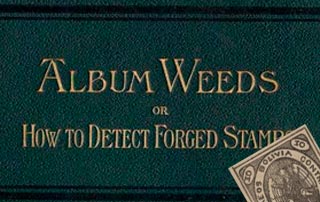
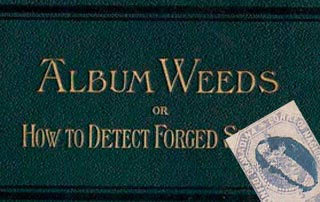
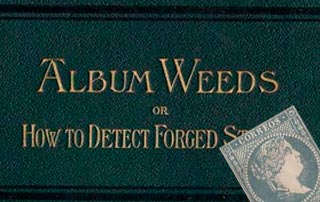
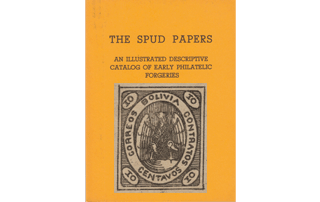
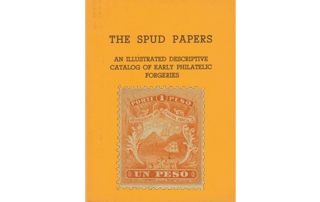

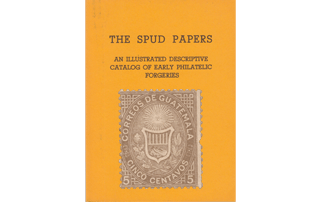
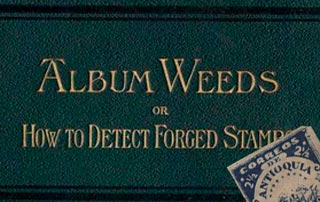
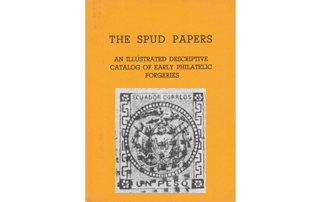
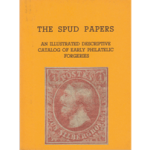
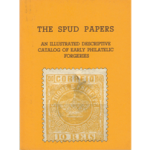
Leave a Reply
Want to join the discussion?Feel free to contribute!